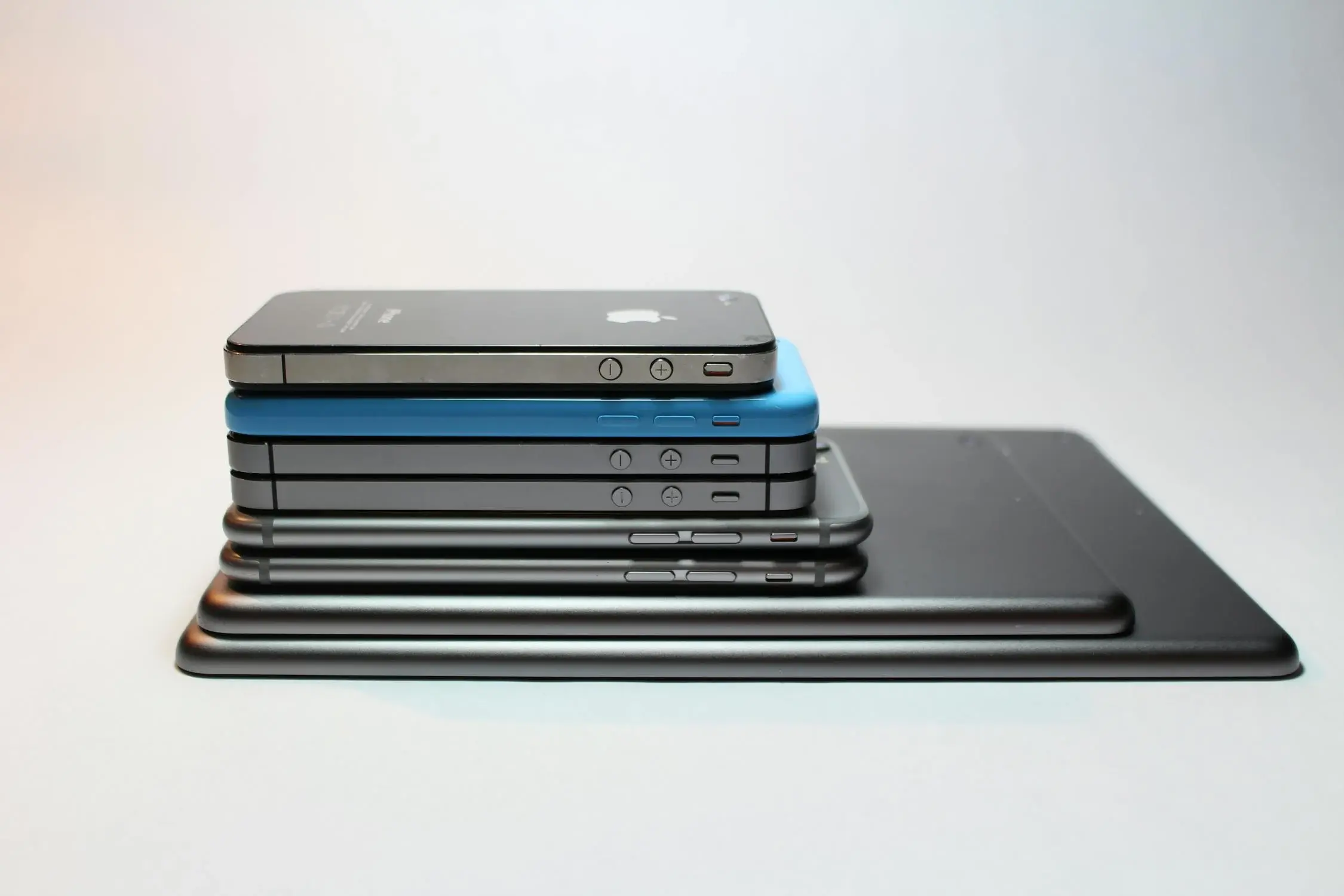In today's increasingly digital world, the public sector stands at a critical crossroad, where the adoption of mobile technology is not only an option but a necessity. Scaling the use of mobile devices within government agencies holds the promise of increased efficiency, improved citizen services, and a more connected administration.
How can your organisation reshape its story and approach towards mobile technology and embark on the essential journey towards widespread mobile device usage among the thousands of workers engaged in critical frontline work?
Setting the scene
To address this question, we need to start by giving a general overview of how mobile devices are currently used and how their usage is expected to change in the coming years.
Today, most desk workers in the public sector have enjoyed the freedom of using personal devices for several years, a trend that gained momentum during the Covid-19 pandemic. The reasons for providing mobile devices to knowledge workers are simple and clear. These devices make it easier to take calls on the go, respond to emails, use collaboration tools, and perform basic administrative tasks like expense reporting. While a mobile device simplifies their work life, it's important to note that they could still perform their tasks without it; in other words, it's not essential for their everyday work.
Read more: Navigating a complex and diverse mobile workforce
The use of mobile devices for "noncritical" work has influenced how these devices are acquired, managed, and secured. This has resulted in a fairly large but fragmented collection of mobile devices in terms of brands, ages, and operating system versions. This poses challenges for the IT department, but they can manage it for now.
However, a significant change is on the horizon as the frontline workforce moves towards mobile and digital solutions. Similar to the private sector, the public sector recognises the significant productivity gains of digitising work processes, driven by political ambition. This has led to many digital initiatives, with frontline workers involved due to the attractive efficiency and productivity gains. According to Gartner, 70 percent of mobile technology investments in 2025 will be directed towards field workers, compared to 40 percent in 2020.
Considering the distribution of office and frontline workers in the public sector, a large workforce is ready to adopt mobile tools in their everyday work. Unlike office workers, this group will use the device as a primary work tool. When frontline work processes go digital, it will be challenging to go through a working day without a mobile device, which will house the applications used to perform critical tasks. This shift prompts a reassessment of how mobile technology is treated within the public sector.
A Guide for Adapting Mobile Technology
A new strategic approach is required, and it will be a challenge for IT managers in the public sector to handle the rapid increase in mobile devices for thousands of workers. To help the public sector smoothly adopt mobile devices, we have created a roadmap with key suggestions on how mobile technology is treated within the public sector.
Analyse
A common issue is the lack of documentation surrounding mobile technology and its usage. IT organisations often possess very limited information about the device estate, mobile usage, and the integration of mobile technology management into existing processes and policies. This lack of clarity makes it challenging to make informed decisions regarding future investments and the formulation of mobile strategies.
Recommendations:
- Conduct an Inventory
Start by creating a comprehensive inventory to understand the current state of the mobile estate. This should include details such as the number of devices, their types, ages, operating system versions, and how many are actively managed. - Identify Digital Initiatives
Recognise ongoing or upcoming digital initiatives that rely on mobile devices. Understanding these initiatives is crucial for aligning mobile technology with broader organisational goals. - Segment Your Workforce
Categorise your workforce by identifying different use cases for mobile devices. This segmentation will help tailor strategies to specific needs and optimise the deployment of mobile technology.
Strategise
A successful journey begins with a well-defined strategy. The public sector should craft a comprehensive mobile strategy that aligns with organisational goals. This includes identifying key use cases for mobile devices, setting clear objectives, and establishing metrics to measure success.
Recommendations:
- Understand Your Business
Familiarise yourself with your business by conducting workshops with key stakeholders from various business lines. - Scenario Planning
Based on the gathered input, describe scenarios for future ways of working, depending on mobile technology. - Identify Necessary Technology
List the mobile technology and capabilities needed to cope with, support, and scale the identified future scenarios. - Perform Gap Analysis
Conduct a gap analysis, mapping the desired future state against existing technology and capabilities. This will highlight areas that need attention and enhancement.
Purchase
Based on the outcome of your analysis and your strategic work, there is often a need to reconsider how mobile technology is procured. To onboard and scale digital initiatives running on mobile devices, a more comprehensive and unified purchasing approach is required. This includes acquiring mobile devices along with enrolment services, lifecycle management, device management, and mobile threat defence management.
Recommendations:
- Craft Tenders for Mobile Technology Solutions
Instead of just buying devices in isolation, create tenders that specifically ask for comprehensive mobile technology solutions. - Ask for Managed Services
Free up valuable time and ensure a best practice approach towards mobile estate management by requesting managed services as part of your procurement. - Adopt an Internal IT Zero-Touch Approach
Consider an internal IT zero-touch approach where the supplier takes responsibility for managing all aspects of the mobile estate. This approach can streamline operations and enhance efficiency.
Implement
Implementing mobile technology solutions is a delicate task with a very hands-on impact on end-users, especially for frontline workers where established processes may be replaced. If the implementation falls short, end-user attitudes and willingness to adopt can be negatively affected, leading to dissatisfaction and frustration.
Recommendations:
- Ensure End-User Perspective Coverage
Make sure that all aspects, from purchasing the device to enrolment and ongoing support for both device and app-related issues, are thoroughly considered from an end-user perspective. - Conduct a Pilot with End-User Feedback
Carry out a pilot and actively seek feedback from end-users. This process is likely to reveal finishing touches that can significantly improve the user experience. - Carefully Plan the Rollout
Plan the rollout meticulously and be present, investing one-on-one time to ensure that departments and their users receive the necessary support early in the process. This proactive approach is crucial for a smooth transition and user acceptance.
Evolve
Every organisation differs in their maturity levels regarding mobile technology and digital adoption, which makes the evolve journey very individual. However, there is always room for improvement in the basic setup. The end goal should be oriented towards the application of mobile tech and exploring innovative ways to increase productivity and satisfaction.
Continued collaborative efforts with industry experts can expedite the implementation of cutting-edge mobile solutions, ensuring that the public sector remains at the forefront of technological innovation.
Recommendations:
- Don't Miss Out on this Step
Recognise the ongoing nature of this journey, as technology evolves rapidly. Stay aware of advancements and seek ways to enhance your mobile tech setup. - Engage with Industry Experts
Collaborate with industry experts to gain insights into best practices, learn from others' experiences, understand what has worked well, and identify pitfalls to avoid. - Involve Business Line Personnel
Include individuals working with the technology on a daily basis in the business development and change agenda. Their input is invaluable in driving meaningful improvements and aligning technology with practical business needs.
Conclusion
Scaling mobile device usage in the public sector is not just a technological challenge; it is a strategic imperative. By elevating the status of mobile technology on the IT agenda, considering more than just the hardware dimension, and actively engaging with the needs and preferences of the mobile workforce, the Nordic public sector can successfully expand mobile device usage. This, in turn, can result in more efficient and citizen-centric service delivery.




